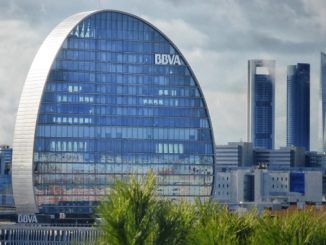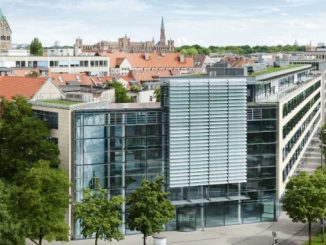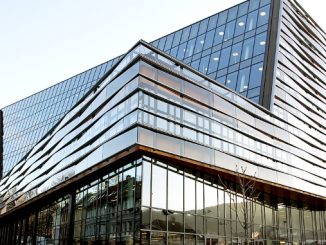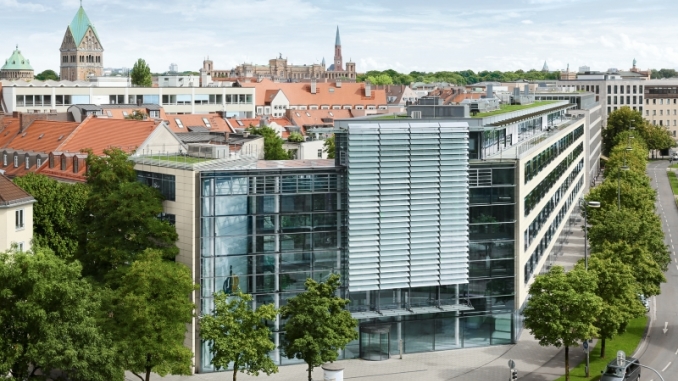
Four years after launching the first ever sustainable covered bond, MünchenerHyp is preparing to launch a benchmark Ecological ESG Pfandbrief, with a green retail loan it launched in 2015 enabling it to be the first German issuer to include residential mortgages in its use of proceeds.
The German bank is roadshowing its green mortgage covered bond until next Thursday with a view to launching a EUR500m long five year euro benchmark, after having on Tuesday announced its plan. ABN Amro, DZ and HSBC are mandated for the roadshow.
Münchener Hypothekenbank eG (MünchenerHyp) launched what it dubbed an ESG (environmental, social, governance) Pfandbrief in September 2014 and the EUR300m five year deal was the first covered bond to carry a green or social label. The proceeds were earmarked to refinance cooperative housing loans and had a second party opinion from ISS-oekom.
Cover pool assets eligible for the new issuance include commercial mortgage loans for green buildings in line with previous green Pfandbrief issuance, but for the first time also German residential mortgages for energy efficient properties.
The inclusion of such assets has been facilitated by a “Green Loan” retail mortgage MünchenerHyp launched in November 2015 – which was one of the first such products in Europe – and distributed through its Volksbanken and Raiffeisenbanken partners. According to MünchenerHyp, today every ninth retail mortgage it grants is green.
“In November 2015 we implemented our own product for our retail customers, a MünchenerHyp Green Loan,” said Claudia Bärdges-Koch, head of debt investor relations and client acquisition at the bank (pictured). “While there might otherwise be problems identifying appropriate green assets in the cover pool, with our own mortgage product we can easily filter out those assets and see how big our green portfolio is.
“We have thus changed our approach to build a foundation for more regular issuance on a longer term basis.”
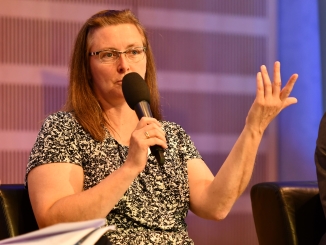 ISS-oekom is providing a second party opinion for the new issuance, having been involved in certifying MünchenerHyp’s green mortgage product from its launch. ISS-oekom also cited MünchenerHyp’s issuance of ESG Pfandbriefe as a positive when recently raising the bank’s sustainability rating from C+ to B-, Prime, which puts it in the top three among a “financials/mortgage and public sector finance” peer group.
ISS-oekom is providing a second party opinion for the new issuance, having been involved in certifying MünchenerHyp’s green mortgage product from its launch. ISS-oekom also cited MünchenerHyp’s issuance of ESG Pfandbriefe as a positive when recently raising the bank’s sustainability rating from C+ to B-, Prime, which puts it in the top three among a “financials/mortgage and public sector finance” peer group.
Residential properties have to have annual energy demand below 70 kWh/m2 to be eligible for MünchenerHyp’s Green Loan – putting them in the top 10% in energy efficiency performance in the German housing market – while properties with a minimum energy performance certificate of B (below 75 kWh/m2) are also eligible for its Ecological ESG Pfandbrief. Commercial property must meet high BREEAM and other standards or be in the top 15% of buildings by energy performance.
The earmarked assets include 1,600 German retail loans totalling EUR280.9m and 14 commercial mortgages in Germany, the UK, Austria and the Netherlands totalling EUR310.8m. A further EUR538.9m of green lending not yet in the cover pool has been identified.
Bärdges-Koch said that initial feedback from investors has been positive.
“People really like the idea that we are investing via reducing the interest rate and introducing a new product, because no-one else in Germany had a green loan for retail customers,” she told Sustainabonds. “We are bringing a greater awareness to customers who might then think about energy efficiency and the climate rather than just buying whatever is available.
“One investor said that he can see that by implementing this product we are already starting to transform our business model, that we have really anchored sustainability in our core business. As a specialised mortgage lender, that’s how we can act on climate change.”
Having originally called its first sustainable covered bond an ESG Pfandbrief, MünchenerHyp will be dubbing future issuance either Ecological or Social ESG Pfandbriefe.
“Sustainability comprises the two dimensions social and ecological (next to the economic dimension, of course),” said Johanna Dichtl, sustainability manager at MünchenerHyp. “We have a holistic understanding of sustainability, including both ecological as well as social aspects in our core business. Therefore we have set up the ESG Pfandbrief programme which will have an either ecological or social focus, thus having the name Ecological ESG Pfandbrief or Social ESG Pfandbrief.
“Ecological involves assets that contribute to energy efficiency, CO2-emission reduction and many other aspects,” she added, “which is another reason for us to use the broad notion ‘ecological’, in order not to limit ourselves to sub-aspects with regard to future issuances of ESG Pfandbriefe.”

